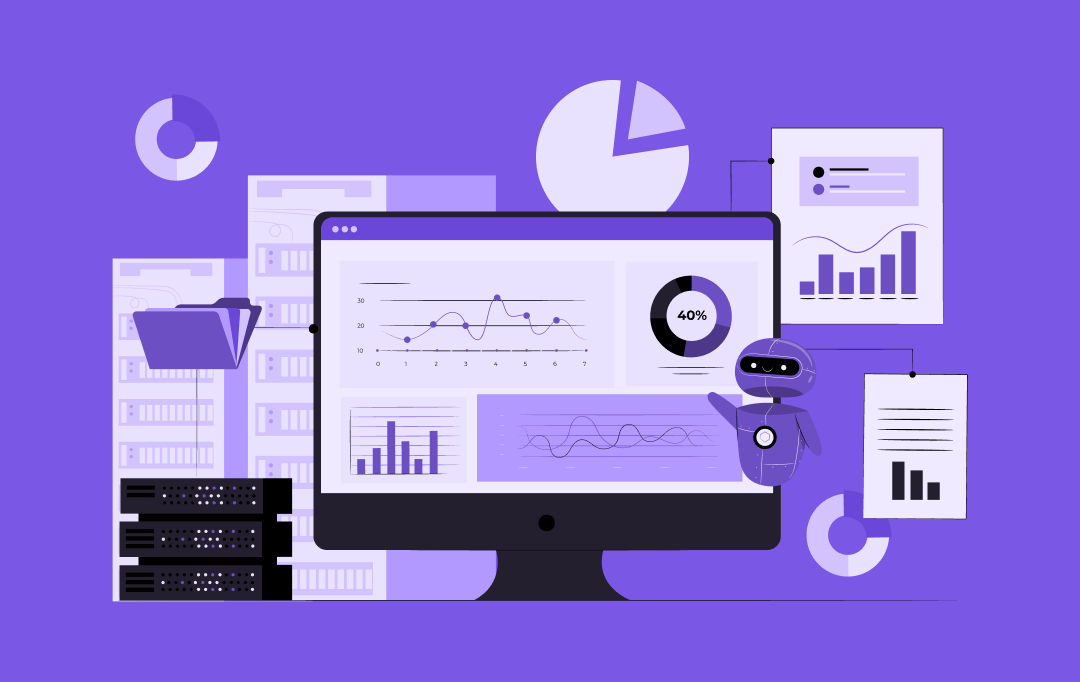AI: The Revolutionizing Force in Data Visualization (2025 and Beyond)
AI: The Revolutionizing Force in Data Visualization (2025 and Beyond)

Hey friend, let’s talk about something seriously cool: how AI is totally changing the game of data visualization. Remember how we used to struggle with mountains of data, trying to make sense of it all? That’s ancient history now. AI is stepping in, not just to help us *see* the data, but to actually *understand* it in ways we never could before.
The sheer volume of data generated daily is mind-boggling – we’re talking about hundreds of millions of terabytes! This data overload leads to significant problems: revenue loss (think trillions of dollars annually!), delayed decision-making, and poor data quality – all of which can seriously hurt a company’s competitiveness. Traditional methods of visualization simply can’t keep up.
Enter AI-powered data visualization. It’s not just about prettier charts; it’s about automated insights, interactive dashboards, and natural language processing (NLP). Think of it as having a super-smart data analyst working 24/7, instantly highlighting trends, anomalies, and predictions.
Key Capabilities of AI Data Visualization:
- Automated Insights: AI scans data, identifies patterns, ranks insights by relevance, and even generates natural language summaries – all without human intervention.
- Interactive Visualizations: Forget static charts! AI creates interactive dashboards that respond to clicks, filters, and even natural language queries. It understands your questions and dynamically updates the visuals in real-time.
- Natural Language Interaction (NLP): Ask questions in plain English (“What were Q1 sales?”), and AI delivers the answer visually. No more complex SQL queries needed!
- Predictive Analytics: AI goes beyond historical data, using forecasting methods to predict future trends and opportunities.
- Real-Time Integration: AI integrates data from various sources, providing up-to-the-minute visualizations.
AI in Action: Real-World Examples
This isn’t just theoretical; companies like JPMorgan Chase (using AI for risk management), Siemens Healthineers (analyzing medical images), and Amazon (optimizing inventory) are already using AI-powered data visualization to gain a competitive edge. Across finance, healthcare, manufacturing, retail, energy, and the automotive industries, AI is transforming how data is used to make better, faster decisions.
Top Tools in 2025 and Beyond:
Several leading tools are making AI-powered data visualization accessible to everyone, from small businesses to large enterprises. These include Tableau (with its NLP capabilities), Power BI (seamlessly integrated with the Microsoft ecosystem), Google Looker Studio (a free, cloud-based option), Zoho Analytics (great for SMBs), Julius AI (perfect for conversational data analysis), and Qlik (offering powerful AutoML features).
The Cost Factor:
The cost of implementing AI-powered data visualization varies widely, from a basic MVP (Minimum Viable Product) starting around $20,000 to enterprise-level solutions exceeding $1.5 million. Annual maintenance fees also add to the overall cost. Factors like complexity, data quality, scale, and integration requirements all play a role.
Future Trends:
The future of AI data visualization is incredibly exciting. We’re talking about:
- Automated Visualization Generation: AI will automatically create the best visualizations for your data.
- AR/VR Visualizations: Immersive data experiences in virtual and augmented realities.
- Explainable AI (XAI): Making the AI’s decision-making process transparent and understandable.
- Personalized Dashboards: Visualizations tailored to individual users and their specific needs.
So, there you have it! AI is revolutionizing data visualization, empowering businesses to make better decisions, faster, and with more confidence. It’s no longer a luxury; it’s becoming a necessity for staying competitive in today’s data-driven world.
Disclaimer: This content is aggregated from public sources online. Please verify information independently. If you believe your rights have been infringed, contact us for removal.